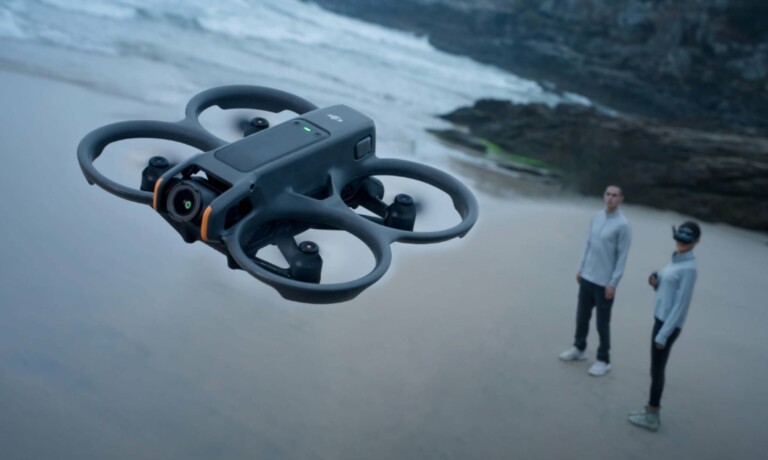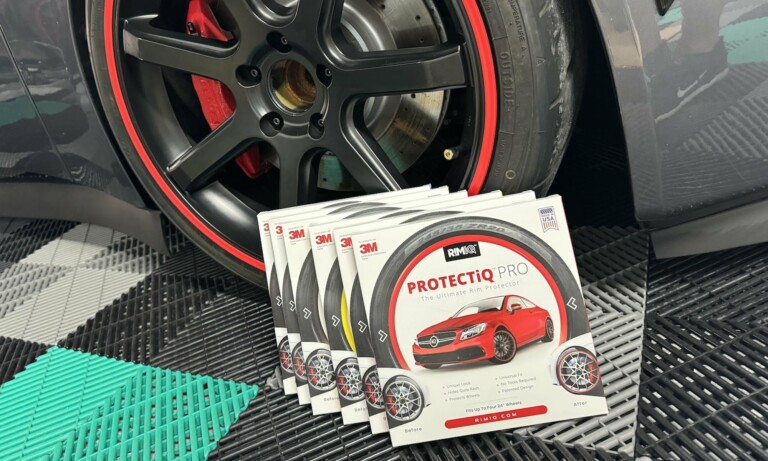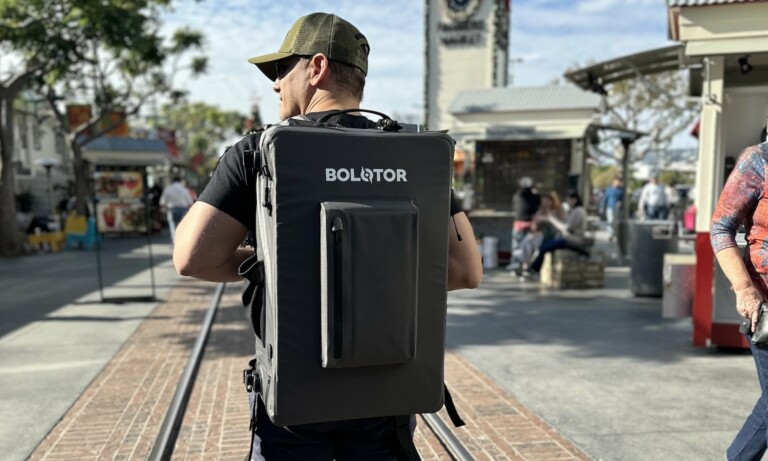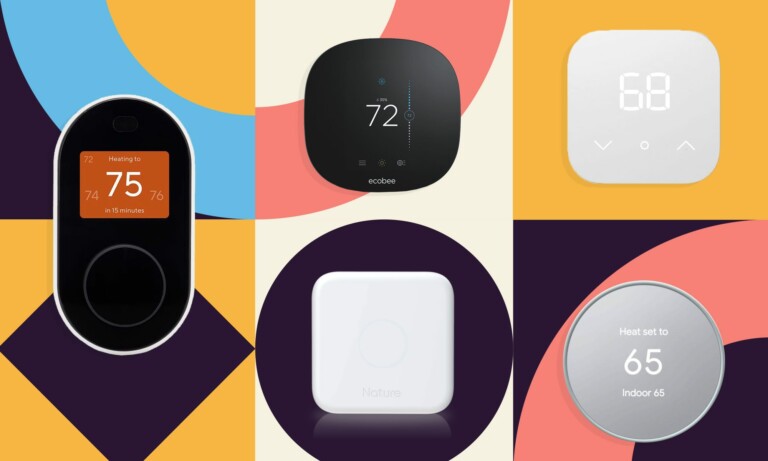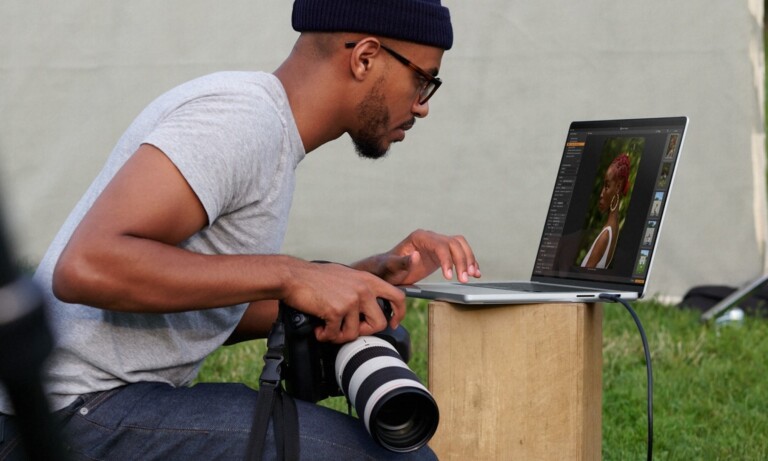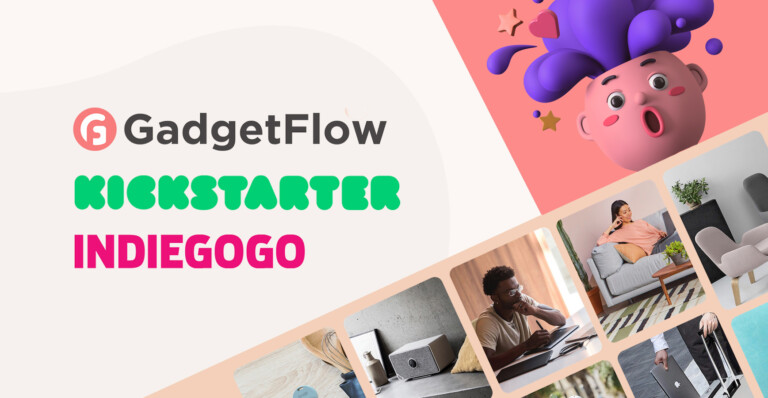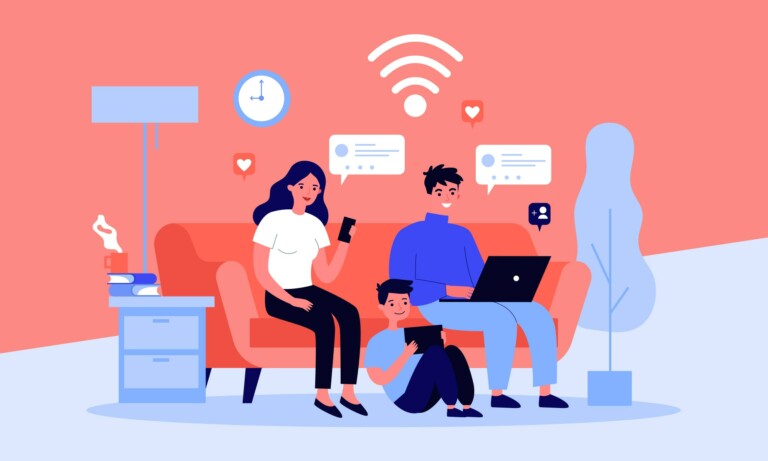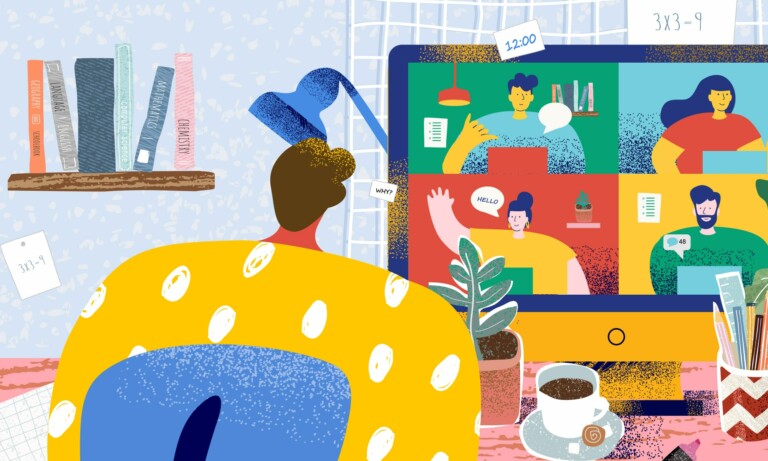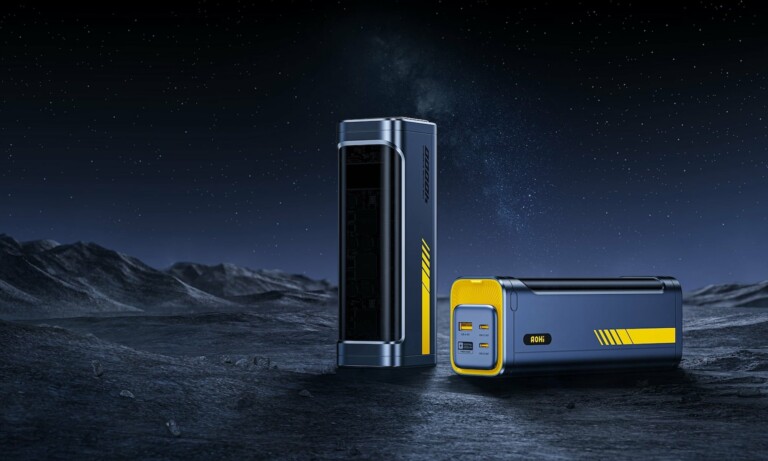Gadget Flow Podcast Episode 8 – Samir ElKamouny from Fetch & Funnel
On this podcast, we sat down with Samir ElKamouny from Fetch & Funnel to talk about Facebook ads and the future of social marketing.

- Fetch & Funnel help businesses grow, scale, and ultimately make a lot more money with advanced cross-channel advertising.
- You can find more information as well as contact Samir ElKamouny through his LinkedIn profile.
Could you give a bit of a snapshot into your world and what you do?
Samir: Sure, absolutely. I’m one of the founders of Fetch & Funnel. We’re primarily a Facebook agency shop. We’re one of the top Facebook agencies in the country. We really specialize in customer acquisition, Facebook, and Instagram ads. One of the newest things that we’re really focusing on as well is Messenger bots. Maybe we’ll get a little bit into that today. What really separates us though from other agencies is the quality of the Facebook and Instagram work that we do and the Messenger bots and a few other cool things like crowdfunding that maybe we’ll get into today.
Can you give us the backstory on how you came to found Fetch & Funnel?
Samir: It started several years ago. My partner and I worked together at one of the leading companies, WordStream, I’m sure you’ve heard of them. We worked over there and it was a really awesome opportunity to work with hundreds of agencies, thousands of businesses, literally helping them grow and scale their Google and Facebook ads. We really saw that there was a need for boutique agencies in the world where… highly focused on customer acquisition, really specialized in running high-quality ads and really, frankly, having transparency with their clients as well. My partner and I went our separate ways for a while and then after a period of time, we had been talking about it for a long time, said “we should really form Fetch & Funnel” and the rest has been history.
What are some of the best practices, tricks, and tips to marketing products in an effective way?
Samir: In this day and age, Facebook and Instagram are kings. It used to be Google but in the last five to six years it’s made a serious switch. Facebook and Instagram ads, I’d say, is one of the biggest things. I think one of the other interesting things that have come about in the last two years is also using influencers as well. Utilizing Instagram, YouTube, sometimes even Snapchat and you can find some of those micro influencers where they don’t have a big following so they don’t really know what they’re worth and you can partner up with these influencers and pay really, really low amounts of kind of a partnership fee and be paying them to just tout your product or mention it or even review it, whatever you want to do. You can sometimes send them the product for free in exchange for a review. If you get those initial purchases from that blip then really, after that, you have a Facebook pixel on your website and now Facebook’s tracking some purchases and you get to start using Facebook’s algorithms to really push your Facebook and Instagram ads, run retargeting, all that kind of stuff.
What are the benefits of using an agency over trying to do it on your own?
Samir: The easiest thing is that you’re working with an expert. You’re working with someone who knows how to do that stuff. You don’t have to figure it out. If you work with the right agency, like us. We’re super transparent, we’re helping people, and we’re explaining what we’re doing to them. They know what retargeting is and how that works. They know what dynamic products ads are. When we set them up we explain that to them. So, they get it. They know what we’re doing and why we’re doing it. I think that’s the most important thing. You’re learning along the way. You’re understanding “why have they split testing ads?” “Why are they split testing ad creatives and copy?” “Why are they wording it in this way?” “Oh, they’re splitting out different audiences and demographics” and things like that. I think that’s a big part of it. The other thing is when you work with an expert and you work with an agency (the right agency), you’ll end up spending less money. Because, if you don’t know what you’re doing you can waste and spend a lot of money. I think that’s an important thing. There’s a value in that as well, you learn a lot when you spend your own money you’re very careful but it’s super easy to spend thousands and thousands of dollars on any platform or anywhere, any ads, not get any sales or results. If you work with the right agency you can mitigate a big portion of that where your money is being well spent, it’s being well tested on a proven copy, proven creative, things like that. Frankly, if the creative doesn’t work we’ll immediately say that “Hey, these graphics won’t work” or “this is not going to convert” or “we’re not going to get high click-through rates on this stuff.” We need to go back and fix it and help you do it or we´ll do it for you. I’d say those are the two biggest things. You can literally learn a lot as well as save money in the long run and make a lot more money.

Using Facebook ads for your crowdfunding campaign
How big is transparency to you in building your clientele and building your relationship with your clients?
Samir: It’s huge. It’s everything. I think, if anybody’s investigating an agency or looking at working with a partner, in general, you have to listen to your gut, right? If it’s too good to be true it probably is. If they’re guaranteeing something, then, there are no guarantees in this business. So, that’s a red flag. Another thing is, you’re paying the agency to do the work for you, you want to own that work. A lot of agencies will build it on their own account and won’t grant you access to it. You’ve paid them to do this work and if you want to part ways, that’s their sticky factor. That’s the way they retain clients. You want to make you that it’s your account they’re working in. So, if you want to part ways with them you can just immediately kick them out of the account and part ways and you own all that work. That goes along with transparency, you know what they’re doing, you can see the changes, you can track the changes and you own all that work. I think another part of that as well is contracted. Some agencies will put you into lengthy, expensive contracts and that’s another retention way of getting their clients to stick with them. I’m not saying that contracts are bad. Sometimes we’re required to do short contracts with clients because it’s a build-out or something like that but typically we don’t do contracts. We believe the proof is in the pudding and I think that’s another important part of transparency. You want to retain all the work. You want to know what the heck is going on. I think those are some of the critical components. You want your clients to be in the loop. And as a client, if I was working with an agency, I’d want to be in the loop. I’d want to know exactly what’s going on and not scratching my head and saying “Yeah, I don’t really know what they do but I think I’m getting sales from them.”
What are some of the biggest challenges you face in running your business?
Samir: That’s a great question. I’d say one of the things is finding really good talent. That’s one of our biggest hurdles. A great example is: we’re doing Messenger bots a lot and Messenger bots is so new (using chatbots on Facebook Messenger). So, when you’re looking to hire someone to assist you with that or getting more talent on our team, for that, I pretty much have to train everyone because nobody knows that stuff. But, if I want to find a Facebook expert it takes me months to find and hire a new Facebook expert to add to our team. When I need another Google expert I can do that next week. There’s tons of them. It’s interesting when you find someone online and they say they’re a growth hacker and they’re a Facebook expert and you get them on the phone and they don’t know what a Facebook pixel is or don’t know how to do advance audience segmentation or things like that. I’d say that’s one of our biggest hurdles as we’re growing really, really quickly.
What exactly is a Messenger bot?
Samir: You’re going to see them more and more. You may have already seen them and just not realized. But, you’re literally going to see them everywhere. Everybody knows Facebook Messenger. Everybody’s got Facebook Messenger on their phone. They use it to talk with their friends and family and all that kind of stuff. Now, businesses are able to utilize Facebook Messenger as a marketing channel and the way you do that is you use a Chabot. Similarly, most people are familiar with email marketing and you use some sort of email platform like MailChimp or Active Campaign or GetResponse or something like that, right? It’s the same thing. You use a chatbot provider that connects directly with your Facebook page and Messenger and you’re able to acquire subscribers and it becomes the subscriber marketing channel for your business. You’re able to send broadcasts out. You’re able to ask people questions and you’re able to engage with people in a completely new way that email just doesn’t provide and frankly there’s no other channel right now that has that. It’s super interesting and because it’s so new that the results that we’re getting from it is incredible. If you think about traditional email, you’re lucky if you get a 20% open rate where on Messenger we’re getting above 80 or even 90% open rates and 20 or 30% click through rates. What’s really interesting is you can ask someone some questions and people love it. You can do quizzes, you can do all sorts of really cool things. We have a candy client. We’re working on just a quick, couple of question quiz where we’re going to come up with their candy monster and people can figure out what candy monster they are and we can follow up with them with really quirky sequences about what candy animal they are and stuff like that. But, it goes way more advanced than that. In the B2B space we can qualify leads. We can ask them a couple of qualifying questions and it’s totally than a traditional form. It’s totally different than any traditional survey or anything like that. It’s so easy because you just click a couple of buttons. Somebody asked you a question, you click on one of the auto responses and then it’s a flowing conversation. You feel like you’re having a chat. You feel like you’re having a conversation but it’s just fluid and it’s really interesting and it’s an extremely quick growing channel. I feel that Messenger will be one of the biggest marketing channels there is in the next three to five years.

Future of Facebook marketing
Where do you see Facebook ads, in general, moving in the next three to five year period?
Samir: It’s only recent that you could even have Messenger as a placement. I don’t know if people have realized but inside Facebook Messenger now, if you scroll past the first couple of chats, you’ll see an ad. And so, that’s new. But the other bigger thing is having Messenger as a destination. We’ll run ads that’s a traditional Facebook ad or Instagram ad but when somebody clicks on it, it brings them straight into Messenger. That’s how you can acquire a subscriber very, very easily. Literally all they need to do is engage with that chatbot and the second they engage with it they are then a subscriber. And they can unsubscribe just as easily. It’s like text messaging, SMS marketing that’s been around for a while. You can get those blasts. Facebook’s really investing tons and tons of money in Messenger. It’s going to be the future. You live in New York and you may have not realized it already but in New York you can hail a cab, an Uber, order food, get dry cleaning. You can do all sorts of things straight within Messenger. You don’t even need to leave Messenger and you can get a bunch of things accomplished. And that’s really where it’s going. You’re going to start to see influencers and bloggers have the majority of their list on Messenger and be able to engage with their audience on Messenger and do live video on Messenger and you’re going to start to see businesses accept purchases and transactions in Messenger. You’re going to see a lot of things change in that space in the next couple of years. And it’s already happening but you’re going to see a change very, very quickly.
What are the strengths of other platforms?
Samir: I think every platform has its pros and cons, even Facebook and Instagram. I think most channels are really specific to your business. If you’re very B2B focused, if you’re very account based marketing focused, if you’re really looking to work with enterprise clients then LinkedIn is one of the best platforms that you can be on because you can target company sizes, specific titles, etc. But, if you’re a really unique product and people might now about it but aren’t really sure about it and they’re searching for something, kind of a broad term for it, Pinterest can be a really great place for product discovery. Of course Google is always the elephant in the room. Google is kind of that necessary evil that you have to work with if you want to get lots of results and you can get really great results on display in Google shopping and things like that. And, of course, you have to be on Google search for your own brand. I think, for a lot of up and coming brands and really cool and interesting products especially awesome gadgets that you guys feature people don’t know that stuff exists. They’re not actively searching for a completely automated sprinkler system. But then, when they see it, it’s “Wow! This really cool. I could use this product.” So Google and some of the more traditional avenues don’t really work and you have to use Pinterest and you have to use Facebook. And again, kind of in the B2B world you can get interesting with LinkedIn and Twitter and things like that. Again, it’s really specific for the business but if you put that kind of growth mindset on and growth marketing mindset it’s really, you’ve got to test as many things as you can as makes sense for your business and then that’s really where you figure out what works and what doesn’t work and where you can scale, where you can put more budget behind because you really don’t know until you try it.
Do you guys provide services for all the platforms?
Samir: We do all the platforms. We started in Google. We’ve been in Google forever. We also started with Facebook and Instagram. I’d say, in this day and age, Facebook is definitely greater than Google. It doesn’t matter if it’s B2B or B2C, Facebook really crushes it. We get better results on Facebook over Google all day long. But, for all the other channels, we do them all. Like I said, it really is dependent on the business. I mean, for a couple of our clients who are really focused on millennials and even app installs and things like that we get amazing results from Snapchat because the cost per impression (CPM) the cost per thousand impressions is literally one of the lowest that we can get. But again, it’s very specific. We have some enterprise B2B clients, we’re not putting them on Snapchat.
What are you most excited about in what you do, moving forward?
Samir: I’d say the biggest thing is we’re really pushing the envelope of what’s next. I’m not looking at what was the coolest stuff that worked in 2017. I’m looking at what’s going to work in 2019. We see it every day. We see what just happened with Facebook and all the different things that are going on in the industry. What’s next? What’s the next platform? What’s the next outlet? What are the next marketing channels that are really going to crush it and I think that’s what gets me really pumped up and excited. That’s why I get so excited about chatbots, because it’s so new and nobody’s doing it at such an unchartered territory that it’s crazy interesting. I think those are the things that get me pumped up. We have a crowdfunding client that we’re working on right now and we sent an email blast out last night, we’re running a precampaign for them. So, we sent an email blast out for them and they got maybe a 20% open rate, 2% click-through rate. It’s good, not amazing, but it’s good. We got an 85% open rate and a 10% or, I think it was 15% click through rate within minutes. It was instant. I was pumped about that. We were all watching as a team and going “Whoa!” Every time you refresh you’re seeing another 100 or 1,000 people (100 or 1,000 not 100,000) opening that messenger blast immediately and that’s so interesting because it just changes the game. If you’re launching a Kickstarter campaign tomorrow and you blast your entire 20,000 subscriber list, if you shoot them an email it could take them 48 hours to get to that email. You shoot them a message on Messenger and “ding,” they get that notification they care about and they open it. I mean, that’s so interesting and exciting that that’s what gets me really motivated. It’s the “What’s coming up next? What’s new in the market?” I think that’s the stuff that really, really gets us excited.
Where can people connect with you online?
Samir: Our website is just https://www.fetchfunnel.com/ and people can connect with me on Facebook always. So Samir ElKamouny, I’m the only one so it shouldn’t be too hard to find me. You can always send me a Facebook message. My email, more traditional, even though nobody likes email anymore is just [email protected]. But, yeah, it’s interesting; like I said, you just add me on Facebook and shoot me a Facebook message and you’ll get a much faster response than you will via email.
I know you might get a bot.
Samir: Very true, very true. A couple of questions and answers. Really quick, maybe I can ask you one quick question.
Sure.
Samir: I’m a big Gadget Flow guy. We love Gadget Flow both from a customer perspective as well as a partner. I’m curious, where are you guys headed and what’s next? And, what are you excited about in 2018?
Man, I’m definitely not, you know we have Evan and Cassie and Mike who are steering the ship on top so they’re probably a better person to ask for the organization as a whole but for me, the podcast is something I’m excited about and we are going to be doing a lot more video and we’re really wanting to expand on that side of what we do. I’m fairly new to the team but I do know there’s been a lot of work on the inside to create a really good team atmosphere. I think there is maybe twentyish people working for The Gadget Flow now, all working remote. Which is, I’m sure, just a huge challenge to manage all the time but they do such an amazing job. For me, as a part of the team, those are the things I’m looking forward to. Just pushing the limits of what we can do with video and audio. I have my own projects, and stuff like that as well. This discussion about Facebook and just products and marketing in general get me really excited for my projects that I’m running myself. But as far as Gadget Flow goes, I think just showing people more cool stuff. I think that’s the goal.
Samir: So, I mean, we all know kind of the metrics that are coming out as far as video dominating everything now. Where do you see video going? Do you have any kind of insights? Or anything as far as, not necessarily like best practices, but where you see some of the video engagement or whatever it is kind of in the next year or two?
You know, to be honest, it’s like all I see is just the upward trajectory. I just see it moving up and up and up and up. And I know video is, I think the possibilities are pretty much limitless with video. I was just listening to a podcast this morning where this guy is talking about, he has two kids (one is five, one is seven), and he recently had a TV show made about him and his family with huge actors, very famous. It’s a national televised show and he said his kids were so not impressed because they’re constantly watching video from anyone and everyone in the world that they don’t even care that it’s on TV versus the computer versus the IPad. It’s all the same to them. Which is exciting to me because it levels the playing field. Basically, then it turns into “the best content wins.” If you make the best stuff more people will watch it. As far as what I see on platforms and stuff like that, it’s a little bit hard to tell other than it’s just going to grow. I think we’re just going to see more and more brands and companies transitioning over to using video and, honestly, audio. I think audio is the sleeper. That’s going to be the thing that changes the game in a lot of ways, when people can really harness the power of audio? Because, what can you do to engage people when they are not in front of a screen? Which is the other massive portion of their life. And that’s through your ears. There’s huge, huge potential in both. And I think we’re going to start seeing a lot of innovation in both spaces in the next year or so.
Samir: That’s interesting. I love what you said “levels the playing field.” I saw the other day that there is this famous director and he’s developed super famous films, blockbuster films, and he just did a horror film that is in the movie theaters and everything and he recorded the entire thing with his phone and he says the future of video is with phones. I think that’s exactly what you just said. Literally just smartphones, the quality of the content you can produce, you have 4K slow Mo cameras and everything. Anyone can make a video. And, like you said, the content is what owns it, the story that you tell, all that kind of stuff. It’s super, super, interesting. We don’t have TVs anymore. We’re all watching YouTube, totally different than it was five years ago, ten years ago. It’s changing even faster now.
Right, and the opportunity for anyone and everyone is just endless. Which is great.
For more such interesting podcasts on crowdfunding, marketing, product placement, and everything in between, subscribe to the Gadget Flow podcast now.

